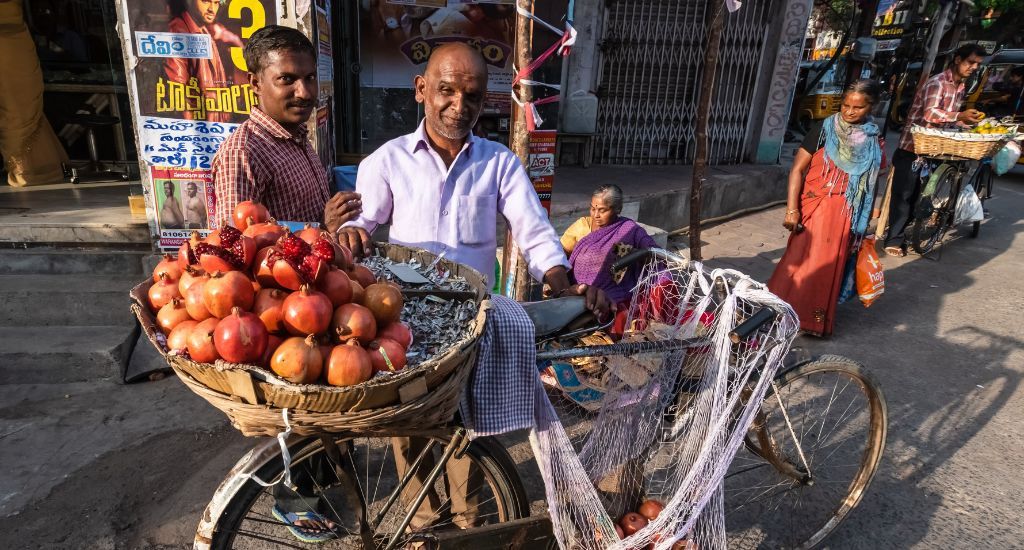
Entrepreneurship: Street vendors and market theories
An everyday sight on the street shows the great Indian spirit of entrepreneurship, the ingenuity of the masses, and their instinctive understanding of complex theories of economics and markets.

An everyday sight on the street shows the great Indian spirit of entrepreneurship, the ingenuity of the masses, and their instinctive understanding of complex theories of economics and markets.
As an excited student of public policy, nothing appealed to me more than the amazing theories of development, economics and social dynamics. During the classes, I would sit and imagine how, during my period of district immersion, I would take these theories to the less fortunate and the deprived. They were probably lagging behind in entrepreneurship due to the lack of this knowledge.
Gradually, with the passage of time, I realised the gaps in theory and practice, and how a melting pot of the dynamics of economic, geographic and social factors could virtually render theories and frameworks useless in implementation.
So, when on a fine Tuesday evening in January, I was able to relate what I was seeing in motion at the ground level to the fascinating theories I had learnt, it rejuvenated my faith in knowledge and made me wonder if it actually is as exclusive as we suppose it to be.
Around 10 in the morning, I saw a large group of people (mostly women) gathered outside one of the premier government offices in the district. From what I could make out, they were sitting on a dharna, a symbolic protest – a sight not uncommon in front of government buildings.
On my second visit to the office in the evening, the sun had set and a little of the receding winter chill had descended in the air. I could still see the protest continue – which was again, nothing in the realm of unusuality as protests are often prolonged.
Also Read: Agri-entrepreneurship: Inspiring family story in a cup of lemongrass tea

What caught my eye was the sight of a thelagaadi, an old gentleman clad in a white dhoti-shirt, selling roasted peanuts from his cart – inside the office campus. He was surrounded by customers, mostly the protesting women. To see a flock of customers gathering in numbers to snack on hot peanuts in the January chill, more so in the hallowed parking spaces of the district’s premier offices, was somewhat funny.
Grabbing the chance to talk to the seller, I asked him about his unusual business territory. His answer, in a mix of Mewari and Hindi languages, was the simplest way one could teach supply and demand:
“I just saw the crowd and came here. When I passed by in the morning, they were sitting there. When I returned in the evening and saw them still there, I thought it would be good business. So I stopped before calling it a day.”
The man simply identified an opportunity – a group of people protesting all day and about to disperse on a cold winter evening must be snacky. In local parlance, the hawkers often shout ‘timepass mungfali’ to sell their stock of peanuts. This man personified that shout.
About three months later, I had a similar encounter of finding the application of theories, in the unlikeliest of places. After the successful completion of a vocational training programme in the juvenile home, we were offered a chance to visit the district jail to discuss the skilling of inmates with the jailer.
We sat in the jailer’s cabin, discussing the work we were there for. But I had my attention fixated on the visitors’ area just outside. A lady had brought bananas and apples for an inmate she was visiting. The polybag had been placed beside the guard. She met with the inmate and then she left.
Also Read: Enterprising women: Stories of inspiring micro-entrepreneurs in Maharashtra

Exiting the jail, I saw a woman selling fruits, right outside the jail gate. However, a fruit cart there was out of place, in a non-residential area with just a road running across. Having seen the scene inside, I was pretty sure this was another case study for supply–demand.
Having validated my theory with the nearby guards, I subconsciously developed a habit of observing the cart daily, on my way to the office. A couple of seasons passed by, and the fruits on the cart kept changing – apples, bananas, mangoes, grapes, but strangely never larger fruits like papayas or watermelons.
Even in summers, when melons and watermelons flooded the summer fruit market here in the city – courtesy of the lake bed available for cultivation of creepers – the cart conspicuously always lacked those. This is something that goes against the supply dynamics. The locally cultivated fruit should be the obvious choice to sell, due to its abundance.
I wondered what drove this decision and one day I enquired the same while buying fruits from the fruit seller. She dismissed my doubts with a chuckle like one does when confronted with stupid questions. She gave the impression that the answer was obvious. Since she was exclusively catering to the jail inmates, she made it a point to keep fruits that can be consumed without a knife, for obvious reasons!
Over the course of my fellowship, the more I come across these examples of harmony in theory and practice, the more hopeful I get. I find it comforting that there exist people in our communities who can harness these fascinating academic theories as if they were common knowledge.
Also Read: India’s rural youth show high interest in entrepreneurship, finds survey
The lead image shows a fruit seller on the streets of Rajsamand. (Photo by Ayush Kothifora)
Ayush Kothifora is currently working as a Mahatma Gandhi National Fellow under the Ministry of Skill Development and Entrepreneurship in Rajsamand district, Rajasthan. He is also pursuing a certificate course in public policy and management from IIM Udaipur.